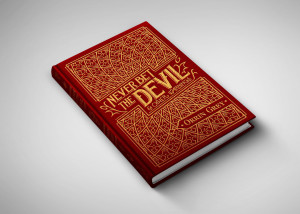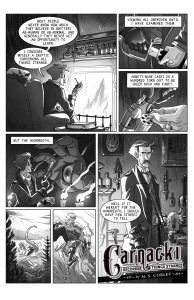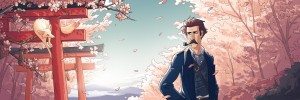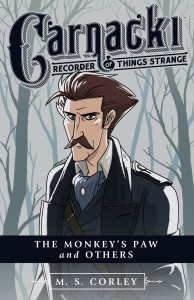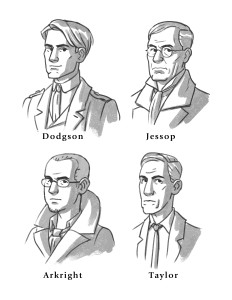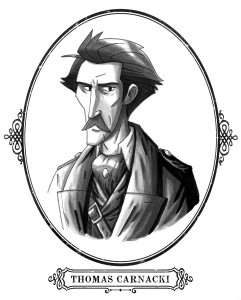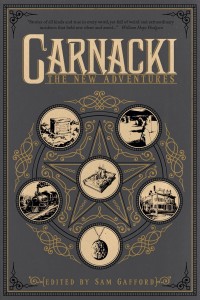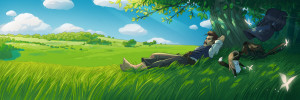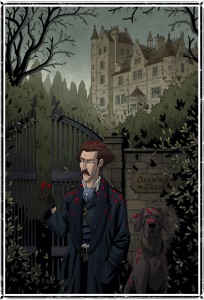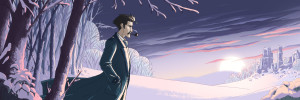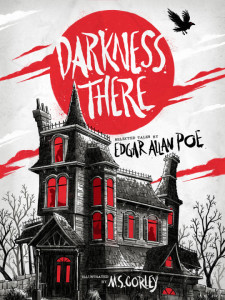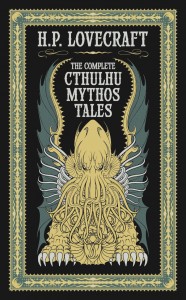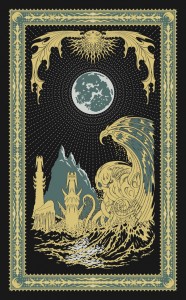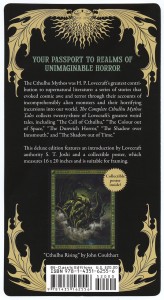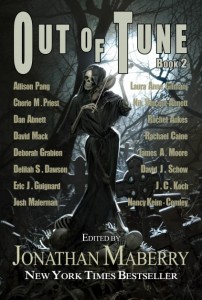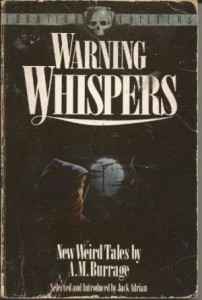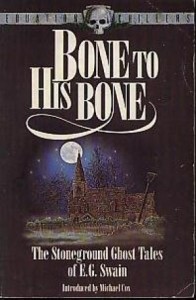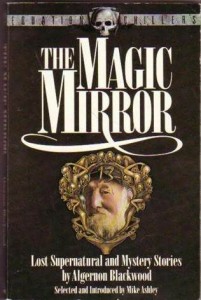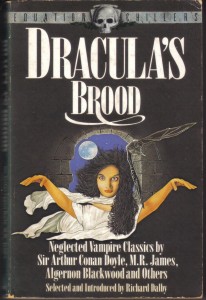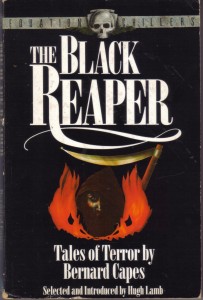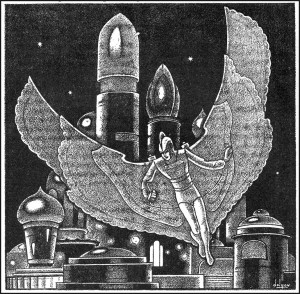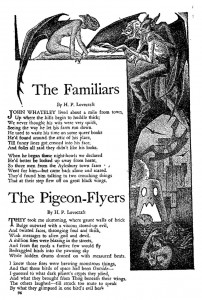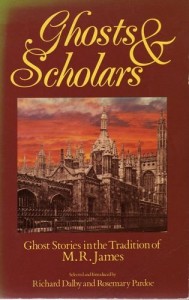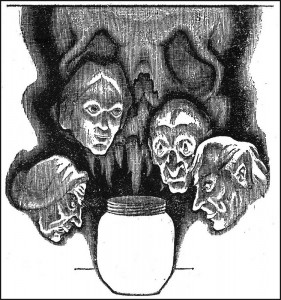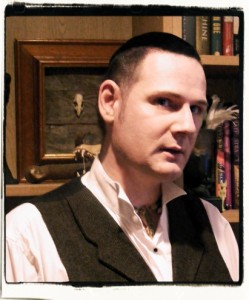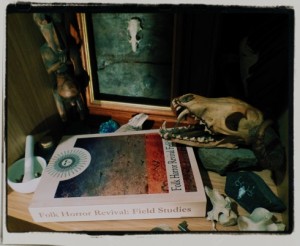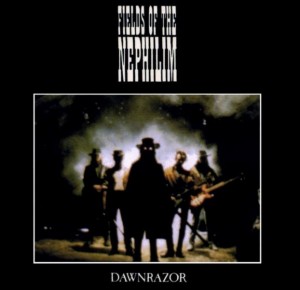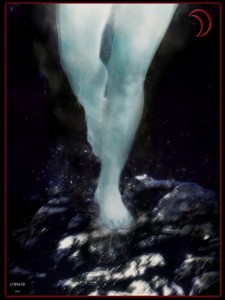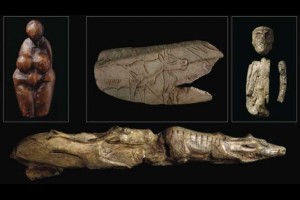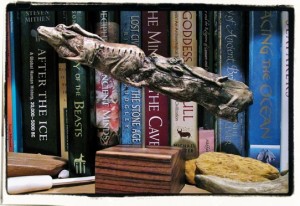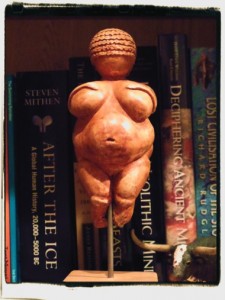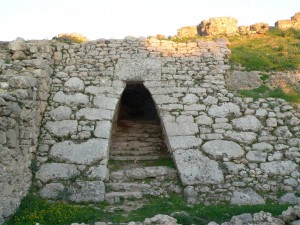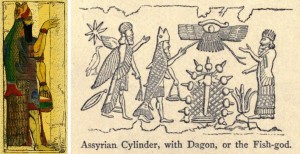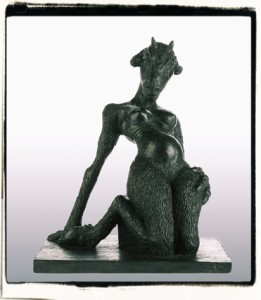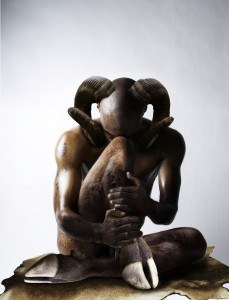We’ve always loved obscure facts, trivia and convoluted connections. So it’s a pleasure to publish something today which outdoes even our own usual delvings. That also means we have to apologise for the distinct lack of lurchers recently. The story so far is that we took on lots of editing, and we need to write to earn money, and… we’ll do better soon. Honest. Django has fleas at the moment, anyway. Where he got them’s a mystery, as he has no pocket-money left, but that should occupy us for a day or two – washing all our manuscripts at a high temperature and so forth.
We do however welcome back James Bojaciuk of 18thWall Productions. Writer editor and publisher, last year he considered the roots and imagery of William Hope Hodgson’s Hog for us. This time he focuses on the little known artist Florence Briscoe, who illustrated Hope Hodgson’s Carnacki stories. And we have the pictures. It’s Edwardian Arcane again!
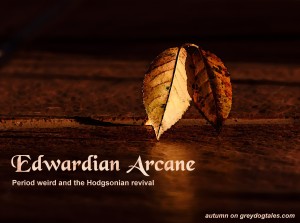
Florence Briscoe: A Life in Scraps
James Bojaciuk
For every person who leaves behind enough papers, speeches, and letters that their lives can be parlayed into a nine volume history, there are thousands who disappear. They only leave newspaper notices, parish records, certificates, the unavoidable documentation that stalks us all. To piece together one such life is to piece together suppositions.
Florence Briscoe is one such life. Until this article she was only known as the original illustrator for Carnacki: The Ghost-Finder. But, even then, she was little more than a footnote. None of the dozens of editions have carried her illustrations, so far as I’m aware; her work only appears on scattered websites, and has only dimly inspired the general image of the character.
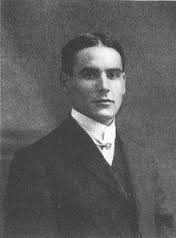
Florence’s birth is a mystery; what little we can surmise about her family life can flash us by in a few terse facts. She was born Florence Schulke, sometime in October, 1890. She certainly spent her teenage years in Liverpool, and was likely born there as well. Her family seems to have been Catholic. She married Joseph Briscoe on May twenty-seventh, 1912. She was twenty-two years old. Her handwriting was precise, but adorned with squiggles (I am tempted to write “happy squiggles”). Her occupation, oddly, was listed as “spinster.” But then, Joseph’s profession was nothing more impressive than a “bachelor” who had attained the rank, in this position, of “bachelor.”
At the time of their marriage, Florence and Joseph lived together at 162 Ma—. The handwriting is too imprecise to discern more without an essay’s worth of educated guesses. This is the last address we ever find put to her name, and we can somewhat safely assume (as safely as one can assume without facts) that she remained there the rest of her life.

It’s tempting to assume that she met Joseph on the way to class, if not in class itself. Beginning several years previously, somewhere between 1908 and 1910, Florence attended a co-ed art school in Clapham. This helps resolve an oddity in the records. At the time of their wedding, the couple had been living at the same address for some time. Even in the Edwardian era, some couples would cohabit prior to the wedding—but that is not the sort of thing even the most daring would write in the church records. But if Florence took up rooms in Clapham, funded by her professional art (more on that to follow), it’s likely that Joseph was either the son of her landlord or a fellow student rooming in the same building. I would wager more on the latter, given they had enough in common to marry, but it’s also difficult to credit an expanding family staying in a student’s apartment for decades. Either “student” or “son of the land lord” would explain why Joseph’s employment is merely “bachelor.” Of course, paperwork regarding later addresses may have been lost.

While attending art school, she entered her work in contests. We know her for pencil illustrations, but here she expresses a fascination for painted landscapes. She had a talent for it, as well, and took home second place in the 1910 Gilbert-Garret Art Contest (which continues to this day). The first place winner’s landscape has been preserved forever; Florence’s, however, suffers the way all second place winners do. Her work is lost. No-one thought to reproduce it for the papers. All of the winners, however, Florence included, had their art exhibited in South Kensington. This was her last known professional work.
Three years previously, she began working at The Idler. It is here that all of her surviving work was published.
And thus we come to the only reason Florence Briscoe is remembered by the world—her association with an obscure genre’s still yet more obscure character created by an all the more obscure author. We don’t know how she earned placement on the Carnacki series. By the time it began, she had been with The Idler for a few years, and illustrated a few minor series. There’s a distinct possibility that she knew William Hope Hodgson and he recommended her for the job. Then again, there’s the equally distinct possibility that they were assigned to each other (as authors and illustrations so often are), and struck off in friendship. There’s a yet third distinct possibility that they met once, and Florence found Hodgson’s face so unusual she simply had to use it in her professional work. The fact behind these theories: Florence regularly sketched characters after Hodgson’s likeness.

Florence had a tendency to reuse a person’s appearance from story to story. A man with a pointed beard and mustache appears in almost every set of illustrations; many of her women appear to be modeled off a single woman (perhaps a self-portrait); and a certain off-used young man is identifiable by his broad chest, worked-out physique, short stature, and rather unique haircut. You may be prepared to cry foul; I would as well, were it not for the fact that this model is drawn remarkably true to life in a single instance, and in that instance the young man is the living image of William Hope Hodgson.
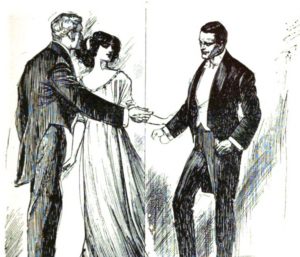
Hodgson appears unmistakably in Florence’s second illustration for “The King’s Cigarette Case.” There is no room for argument. The perspective has thrown off his eyes’ placement, somewhat, but the face and hair are inescapably Hodgson’s. Let us call him the “Hodgson model.”
Knowing Florence’s predilection for reusing models—and never bothering to alter their features from story to story—we find Hodgson throughout her illustrations, standing out due to his striking face and unusual body-type. Though in one instance the “Hodgson model” wears a mustache (“Lord Ernest’s Trap”), the rest of his design is unmistakable.
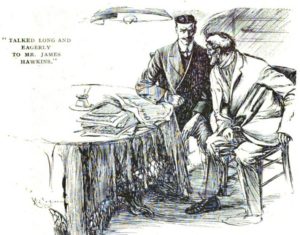
We can take this one step further. It is my contention that Florence based Carnacki’s appearance on Hodgson. He shares in many of the general attributes Florence ascribed the “Hodgson model.”
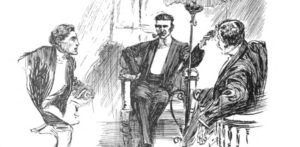
It is perhaps an unprovable contention, like proving the Rorschach shows what you see. Before we begin, let one thing be said: Carnacki is inescapably linked with a mustache. He and it are inseparable. Find any artist who has drawn the ghost-finder; the character’s face is graced with a mustache. There is one problem. Carnacki was neither described—nor drawn—with any facial hair. So far as I can tell, this portrayal began when a low-resolution version of Florence’s header found its way online in the early days of the internet. What was a shadow, thanks to pixilation, became a mustache. Without any of Florence’s other illustrations at hand, the idea of a mustachioed Carnacki flourished.
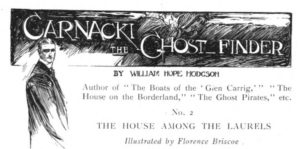
Carnacki illustrations share in the same aspects as the Hodgson model. He has the same unique haircut seen in photographs of Hodgson. He has the same short, stocky strength-trainer’s build. In most of the illustrations, he shares his author’s nose, chin, and eyes.
If this identification is accepted, it throws significant light onto Hodgson. First, much can be made of the fact he allowed his character to resemble him. Second, we possess art of Hodgson that was apparently drawn from life. Our picture of him expands. All of this due to Florence’s skill, and her reliance on a handful of models.
To return to Florence: the most striking thing about The Idler, as one combs through its back issues a century later, is how many women illustrated its stories. Male artists are rare, and almost absent. As much as some may like to present Edwardian women imprisoned within their homes—making a single career, as Florence did, was hardly unusual.
Artistically, Florence was far above most—truthfully, all—of the artists working alongside her at The Idler. Her work has an excellent command of shadows, and her characters have that rare spark of light. Unlike many artists from her era, her crosshatching is only present to draw the eye, and her shadows are controlled. Readers who have only seen her Carnacki illustrations have not seen her full range. Those pieces of art are more controlled, and lean more toward darkness—a style well-fitted to ghosts, but not a style which has not aged nearly so well as the remainder of her illustrations, given Edwardian printing and the unkindness of digital conversion. Her Carnacki illustrations are muddy, now, and occasionally illegible.
If she enters the historical record with Carnacki, she departs with him as well. When the series ended at The Idler, so too did her employment. An imaginative “historian” can devise any number of reasons why she might. A historian can only shrug. All that remains on record of Florence Briscoe can be discussed in a matter of paragraphs.
On the twenty-first of March, 1921, Florence witnessed the marriage of her sister Matilda to Seth Hellen.
At a time unknown, Florence and Joseph had a son, Gerald. On December twentieth, 1959, Gerald married Helen Vassallo in St. Patrick’s Church, Sliema. St. Patrick’s of Sliema is not an ordinary church, however, and almost exclusively catered to British servicemen. It seems likely Gerald served in the British armed forces, and possibly in World War Two.
Try as I might, I have uncovered no death certificate. My attempts to track down her family have begun where they started. Florence’s story, as with so much involving early weird fiction, ends in a question mark.
The weekend will bring new delights, but what they are we do not know as yet…
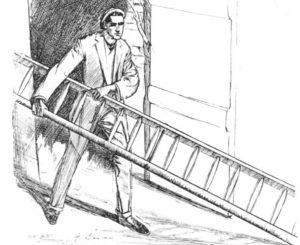



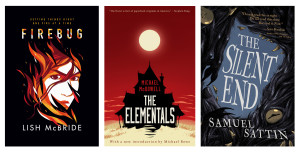
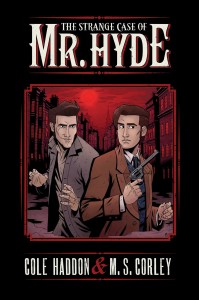

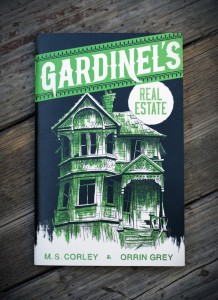 gardinel is available here
gardinel is available here